For a piece of equipment that is not electrical, digital, or highly complex, a pool filter can still cause a great deal of pool owner stress. You might be surprised how many questions we field regarding what is essentially a big tank that water passes through. But since that tank is so vital to the operation and safety of your pool, I wanted to share the some of the most common issues our techs encounter and how you might troubleshoot some basic problems.
#1 The Spider Gasket
Inside the multi-port valve on DE and sand filters, you will find this gasket which somewhat resembles a spider web, featuring a small center ring and spokes (typically 4 or 5) that connect to a larger outer ring. For a small, simple part, it can be the source of quite a few filter headaches. Signs of a worn or damaged spider gasket include leakage around the valve or water coming out of the waste line even though valve is set to “filter”. Damage to this gasket is commonly caused by moving the valve handle while the pump is running.
If you need to replace the spider gasket, look at the valve body itself (not the filter tank) for a model or part number. With a valve model number, the correct gasket can usually be cross-referenced. It is worth noting that some manufacturers include the spider gasket only as part of the diverter. In this case, you would need to purchase the entire diverter assembly. If you are unfortunate enough to find yourself in this camp of filter owners, you will want to compare the price of the diverter vs a completely new valve.

#2 True Grit
Probably the most ironic of filter problems is sand or DE powder flowing back into the pool. For sand filters, one or more cracked laterals or a broken standpipe is typically the culprit. Replacement laterals can be purchased individually or as part of a standpipe assembly. The standpipe is available separately also, if you determine all of your laterals are in good shape.
For DE filters, you are usually looking at worn grids that have developed tears. While checking the grids, also inspect the standpipe o-ring for wear and tear. Another cause of DE in the pool is simply adding too much DE powder when recharging the grids. Be sure to follow the manufacturer’s instructions; in the absence of an owner’s manual, a general rule of thumb is 1 lb of DE per 10 sq ft of filter area (this refers to the square footage of your filter, not your pool).
#3 Under Pressure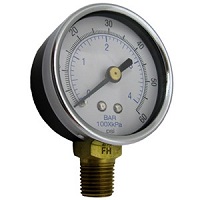
Feeling the pressure of pool ownership? Then you and your filter might have something in common. Some filter problems are caused by excessive pressure build-up inside the tank. High pressure can be caused by having a filter that is undersized for the pump; this means the pump is pushing more gallons per minute than the filter is designed to handle. Another cause is simply a dirty filter with cartridges that need to be rinsed, or sand or DE that needs to be backwashed. If after cleaning, you are still faced with high pressure, there could be a clog in the plumbing lines.
High pressure can cause laterals to crack and leak sand into the pool. It can also be the reason for a cracked tank or even more dramatic, the filter lid blowing off.

#4 Feeling a Little Low
As mentioned above, high filter pressure is a problem but so is low pressure which usually indicates some obstruction of the water going into the filter. This can negatively impact pool circulation. First step – check your pump strainer basket and impeller. If either one is clogged with leaves and other debris, clean them out to increase water flow.
Low pressure can also be linked to the pool skimmer which could have a clogged basket or a weir stuck in the open position (the weir is the flap on the skimmer that sways back and forth). Reduced water levels can also cause low pressure.
It’s worth noting that a broken pressure gauge can give a false reading, high or low. Check to make sure the gauge needle returns to zero as it should when the pump is off.
#5 The Replacements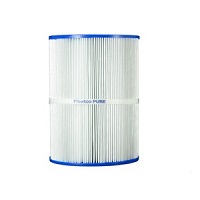
All your filter might need is new cartridges or grids but good luck trying to figure out which ones you need. This is a very common conundrum. Frequently, the filter manufacturers place a label or plate on the filter tank that lists all the different filter sizes for that particular model. Then they put a check mark or punch out a hole next to the actual filter size. That is, in theory. I hear from many customer that there is no mark or it has worn off over time. There could also be no readable part numbers on the grids and cartridges themselves, leading to a good deal of confusion.
The easiest solution in this case is to measure the actual media. So for DE grids, you would measure the length and width of the full and the partial grids. Most DE filters have seven full grids that are the same size and one partial (shorter) grid. For cartridges, measure the length, the outside diameter of the cartridge, and the diameter of the hole. Often people don’t want to take the extra step of opening the filter to get these dimensions and they take a guess at the correct size. This makes for an awful lot of returns during pool season so I highly recommend doing it right the first time.

Replacing sand can also present a challenge or two. The main question being “how much sand do I need for my filter?” This will be in your owner’s manual but if yours has gone missing, feel free to contact us here as we have specs on many filter models. The manufacturer can also be a resource for the proper sand amount for older, more obscure filters. You will want to check on the recommended sand type as well which is typically #20 or #30 silica sand but does vary per manufacturer.
If you’ve been a pool owner for any length of time, you will not be surprised if you run into other filter problems not covered here. As customers often tell me, “It’s always something!” But rest assured, we’re happy to help you troubleshoot filter problems, find replacement parts, and get you on your way to enjoying that pool.
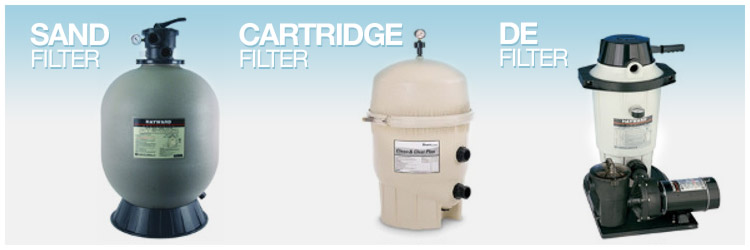
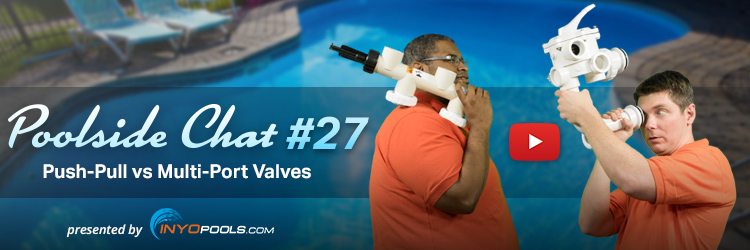
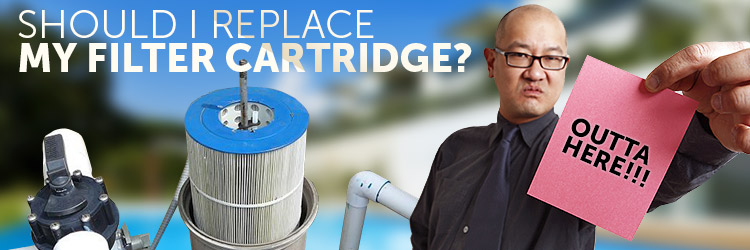

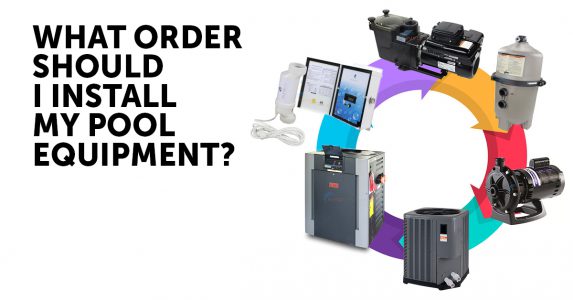






My pool filter is not holding water. (I normally fill it to above the intake line. When I do so, the water leaks out, although I don’t see water anywhere around the unit). What’s going on? Thanks for any info…
Are you talking about a classic standalone filter found on most pools? Or do you have a filter/skimmer combo on some above ground pools? If it is the latter, the issue is likely that the water level in the pool is not high enough. Most above ground pool systems are gravity fed, which means prime is pretty much guaranteed, not dependent on the pump/plumbing to create and maintain a vacuum lock.
My Hayward filter has some wetness underneath. The pool is losing the water slowly. There is no leak anywhere in the system. Can it mean the filter is cracked at the bottom which I cannot see or can there be another reason?
It could be. You should ensure the filter’s drain cap is on tightly. If the water level drop in your pool is noticeable, you should see a lot more water around the pool equipment if the filter was the only source for the leak.
I have a Hayward filter S-180-H, sometime when vacuum to waste, I get dirty water from the return jets. This should not be happening.
Thanks Brian
Your filter may have a cracked lateral; you’d need to open it and remove the sand to check its structural integrity.
By the way, S180H (SX180H) is the part number for the drain cap of the filter, but it is not the tank’s model number.
was cleaning filter basket at the pump and decided to lube the gasket now can’t get it back on, seem like it’s to big.
There’s a slight possibility you stretched out the gasket while lubing it. You can keep trying to get it to fit, or pick up a new gasket.
When I put Hayward pump in the filter position it seems like nothing is going on. Very little water movement.
The bottom half of my pool filter Pentair 4000 series just cracked when I turned on my pump to heat the jacuzzi. Should I replace the bottom half or the whole thing? Is it worth it to replace the pump as well, it’s variable filter but at least 7 years old, if not more.
If the filter is only 7 years old, and the rest of the parts are in relatively good condition, I’d just replace the tank bottom. Do you know why the bottom cracked? Had something banged into id into it beforehand? Seems odd for a filter to bust like that at that age.
I have a Hayward S270T Sand filter purchased by my earlier owner about 7 years back. when i start the pump water leaks in a jet from the area connecting the filter and the valve/diverter. One reputed pool service company told me to replace the filter and another pool maintenance handy man said you need to replace the top valve diverter. When I checked this closely, it looks like there is a crack in the filter body but am not sure. Can you let me know I should a. Seal the entire circular area connecting the valve and the filter body b. Replace the valve/diverter or c. Replace the entire Sand filter? Appreciate your help here
This is something I would need a picture of to be sure of the filter parts you are referring to. If two different pros looked at it and gave different verdicts, I need eyes-on. You can post a dropbox, google drive, or Imgur share link.
I have a bestway 1500 pool pump and broken white plastic pieces are at the bottom where the filter goes
Are you trying to find a replacement pool pump or parts for the one you have? Regarding the latter, we do not carry Bestway parts. We may be able to track down a parts diagram for you though.
My pool filter cartridge is stuck inside the housing, and will not pull out. any tricks you know of to get it out?
I my filter pump makes noises and shakes when I put it up to 3-00 RPM’s
I can’t get the Hayward sand filter to keep pulling water from skimmer to tank. The skimmer isn’t working at all. Do you think I have an air leak? I sent water from skimmer to filter so I know there isn’t a clog. Do pump motors get too weak to pull water or should I keep checking for air leaks?
Unfortunately, I can’t diagnose much from that description. But here are a couple of guides you may want to try troubleshooting with: How To Determine Why a Pool Pump Won’t Prime & How to Identify and Correct Air Leaks
I have a Astralpool ECA650 sand filter (2 years in service). The filter housing is made of two halves (top and bottom). Water leaks from the joint between top and bottom halves. I am wondering if this could be repairable?
Thanks
We do not carry the parts for this filter, but this is a diagram for it, you can see the corresponding part numbers.
Search the part numbers you need in google and there should be a host of retailers that offer it.
https://s3-ap-southeast-2.amazonaws.com/astral-test/Spare_Parts/ECA__CA_MEDIA_FILTERS_SPARE_PARTS.pdf
My pool is salt water with an earth filter and after cleaning the filter and backwashing continusly through the summer it keeps building pressure, not sure if my cartridges are bad, was told they could be collapsing on themselves which could build up pressure…only 4 years old
What size DE filter do you have? 24, 36, 48, 60, or 72 sq foot.
DE grids are a fabric sheath over a plastic frame. If their structural integrity were in question, you’d likely see sagging or feel loose pieces of plastic frame in the grid.
How much DE are you putting in the filter after backwashing? You may be adding too much DE for your filter size.